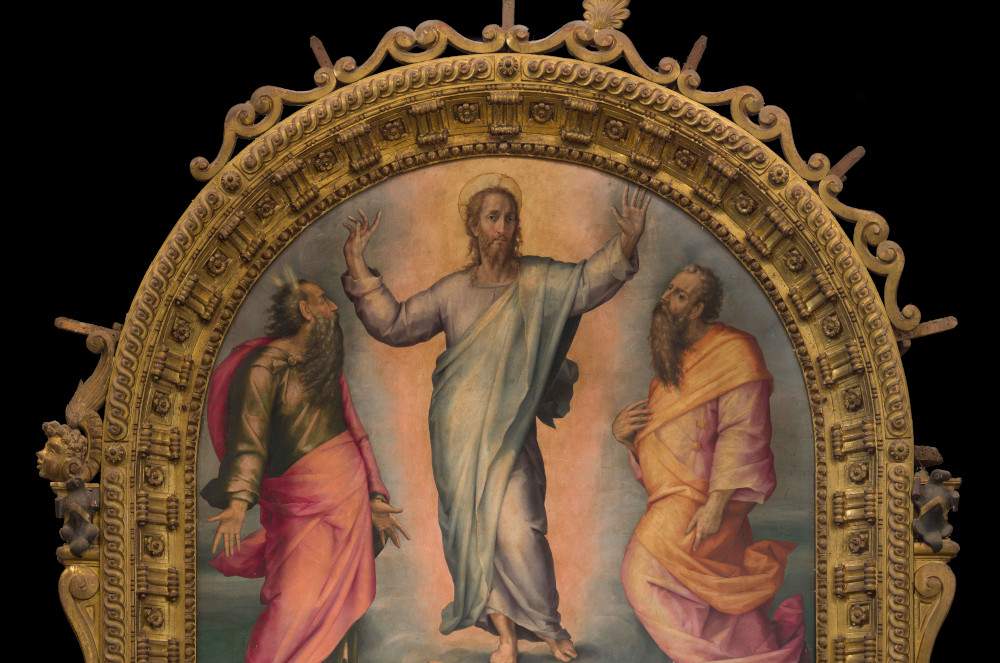From Nov. 28, 2023 to March 10, 2024, the Galleria dell’Accademia in Florence will dedicate the first monographic exhibition in Europe to Pier Francesco Foschi, a 16th-century Florentine artist, a pupil of Andrea del Sarto, who also collaborated with Pontormo, and whose youthful work, namely the Holy Family with St. John the Baptist, is housed in the Gallery. The exhibition will be curated by Cecilie Hollberg, director of the Galleria dell’Accademia in Florence; Elvira Altiero, Art Historian Officer, head of the art history department of the Galleria dell’Accademia in Florence; Nelda Damiano, who curated the exhibition Wealth and Beauty, dedicated to the artist at the Georgia Museum of Art, University of Georgia (Athens, USA); and Simone Giordani, professor of art history, scholar of Florentine Renaissance and late Renaissance painting and specialist on the painter Pier Francesco Foschi.
“Thanks to the Galleria dell’Accademia in Florence,” says Cecilie Hollberg, "important restorations of paintings placed in various places in the territory have been initiated with this project, and while waiting for the opening of the exhibition, we are exceptionally presenting a preview of the restoration site, still in progress, of the Transfiguration, one of the three altarpieces made by Pier Francesco Foschi, preserved in the Basilica of Santo Spirito in Florence." The work was executed before 1550 (between about 1545 and 1550), in oil, with an original gilded carved frame; today it is located in the second chapel from the right of the church of Santo Spirito, the Capponi d’Altopascio chapel, in the right transept wall.
The restoration, commissioned by the Galleria dell’Accademia in Florence, is being carried out by Kyoko Nakahara regarding the painting’s pictorial surface, and by Francesca Brogi, in collaboration with Gabriele Maselli’s Bottega d’Arte Masselli, for the frame. Despite the imperfection of the wood, the panel was in a good condition from a structural point of view. The pictorial surface appeared rather dull, clouded by the accumulation of deposits of atmospheric origin and black candle smoke, with a heavy patina of unknown nature. The work had undergone very coarse and drastic prior cleaning, presumably in the 19th century, if not earlier. It had been altered by some retouching located on the draperies of the saints and by repainting on the clouds, at the height of St. Peter’s raised arm, to hide the degradation presumably caused by candle smoke.
The wooden frame, carved in the style of Florentine Mannerism, gilded with gold leaf using the gouache technique, was in a fairly fair state of preservation, although there were numerous losses of the decorative wooden elements and many small and medium-sized gaps in the gold leaf of the preparatory layers and the wooden support, spread over the entire gilded surface. A thick, very dark layer greatly obscured the brilliance of the original gold.
The preservation and restoration project of the Transfiguration aims to ensure over time both a good stability of the support of the work and a good preservation of the preparatory, pictorial and gilded layers, in order to restore a better legibility of both formal and chromatic aspects of the panel as a whole. The painting was disassembled from the altar, removed from the frame and moved to the restoration site created ad hoc inside the basilica, as per the request of the parish priest of Santo Spirito, in agreement with the Soprintendenza Archeologia, Belle Arti e Paesaggio (SABAP) for the metropolitan city of Florence and the provinces of Pistoia and Prato. Carrying out the restoration with an on-site site is more appropriate for the conservation of the work, which thus does not undergo particular climatic changes or even stresses, due to transport to an external laboratory. First, a photographic documentation was carried out, then it was subjected to non-invasive diagnostic investigations with the technique of photography in order to understand the execution technique and the conservation conditions more thoroughly. As a first step, complete anoxic disinfestation of both the panel and the frame was carried out in order to eliminate every insect species at every stage of the life cycle. After verifying the stability of the pictorial and preparatory layers, localized stopping of the preparatory and pictorial layers was carried out on some areas.
At present, the Transfiguration has undergone thecleaning operation, which consists mainly of the selective removal of the surface layers of atmospheric deposit and smoky black, located all over the pictorial surface, and of the brown patina. It is appropriate to remove everything that greatly obscures the formal and chromatic value, typical of the painter’s time, with suitable materials and mechanical, physical, or biological systems, under control of magnifying glass and microscope. The work has recently been placed vertically on a structure of innocent pipes, safely, in order to complete the cleaning of the central part. Next, planned interventions such as plastering and filling in the missing pictorial and preparatory layers, and finally varnishing, will be carried out. The frame is also, at the moment, undergoing cleaning. This will be followed by a review of the stability of the gilded/preparatory layers, the filling of the gaps, as with the painting; the gilded surface will be completed with gold leaf or powdered gold; the reflectivity and hue of the gold will be checked; and, then, the final protection will be done. Already at this stage one can sense the incredible effect of the restoration that is restoring the Transfiguration to its original color splendor, which can be admired even more once it is placed back on the altar.
Pictured is Pier Francesco Foschi, Transfiguration (detail).
 |
| Florence's Galleria dell'Accademia devotes a monographic exhibition to Pier Francesco Foschi, a 16th-century Florentine artist |
Warning: the translation into English of the original Italian article was created using automatic tools. We undertake to review all articles, but we do not guarantee the total absence of inaccuracies in the translation due to the program. You can find the original by clicking on the ITA button. If you find any mistake,please contact us.